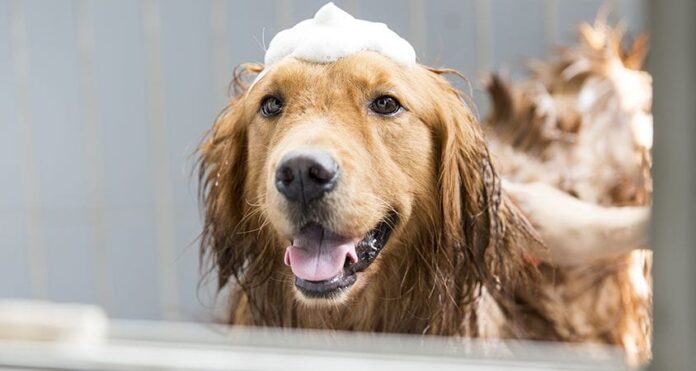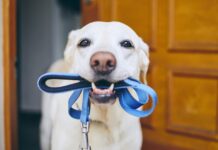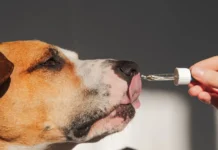Have you ever been in a situation where you had to wash a dog but it kept running away? You don’t want your pup getting all wet and dirty, so how do you clean them without them freaking out the entire time? Don’t worry, we’ve got the answers! Let us show you how to keep your pup calm while they get a good scrub down.
Preparing for the Wash
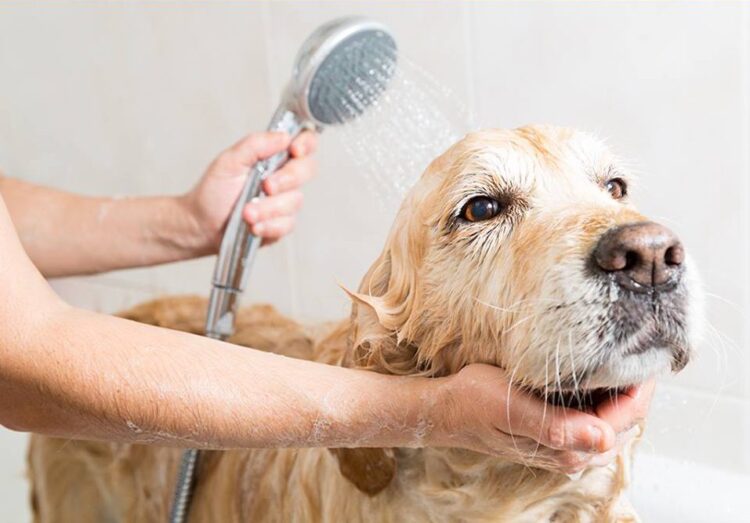
With the tips provided by Dog Grooming Madison, we can easily tell you that this is the perfect way to wash your dog. Start by getting your pup used to being touched in areas that may get wet or sprayed during the bath. Brush and massage them regularly throughout their coat and examine any injuries or possible signs of infections — this will let your pet associate touch with positive reinforcement. If possible, take them on walks prior to bathing as exercise can help tire them out as well as give them an outlet for stress.
When gathering materials, ensure that you have gentle shampoo made specifically for dogs, a no-tangle brush, cotton balls to protect their ears, rags to clean up splashes, towels for drying off afterward and possibly treats nearby in case they become distressed during the process. Make sure the water is lukewarm when filling up the tub or sink — extreme temperatures can cause burns and further distress to your pup.
Make sure all tools are within reach; stepping away from a panicking pet can increase their fear levels even more. You may also want to consider using rubber gloves when performing the wash so you do not get bitten or scratched in case it is a particularly frightening experience for them.
What to Use for Washing
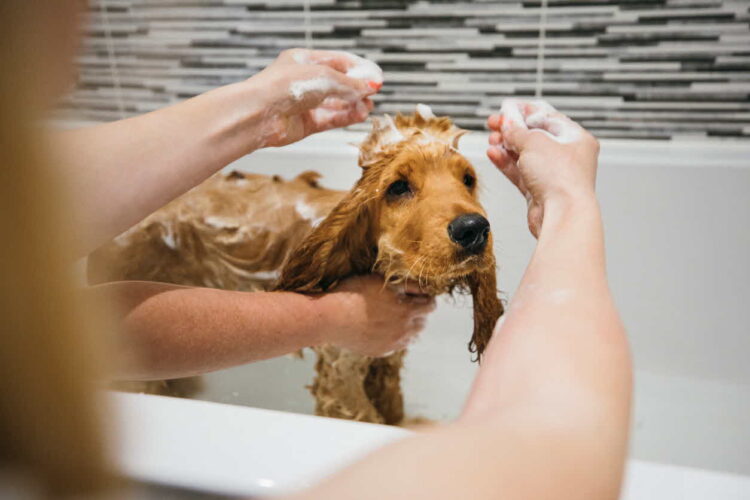
The type of shampoo you should use will vary depending on your dog’s coat, skin and age. There are many types of shampoos on the market which can be broadly categorized into medicated, specialty and general purpose. When selecting a shampoo for your pup it’s best to pick one that is made specifically for their type of coat and skin.
Medicated shampoos are designed for dogs with certain skin conditions, such as allergic reactions or eczema. These usually have antiseptic ingredients, including benzoyl peroxide and sulfur, which can reduce inflammation and help heal damaged skin cells.
Specialty Shampoos come in a variety of types and are used to enhance specific characteristics in a dog’s coat or to add nutrition or conditioning treatments. Examples include whitening or brightening shampoos to treat discoloration of a light-colored coat; deodorizing shampoos that help minimize odors within a dog’s fur; protein-conditioning formulas specifically meant for active dogs; moisturizing cleansers; medicated formulas; flea shampoos and even anti-grease cleaners meant to tackle heavy oil productions in some breeds’ coats!
General purpose pet shampoos are great all-in-one options as they usually have mild surfactants that create gentle lather without irritating the scalp or inner ears rough finish ridges often found on thicker-coated breeds. They also contain additional conditioners that help maintain natural oils in the fur while hydrating the skin—allowing it to remain healthy looking with richer colors!
Techniques for Washing
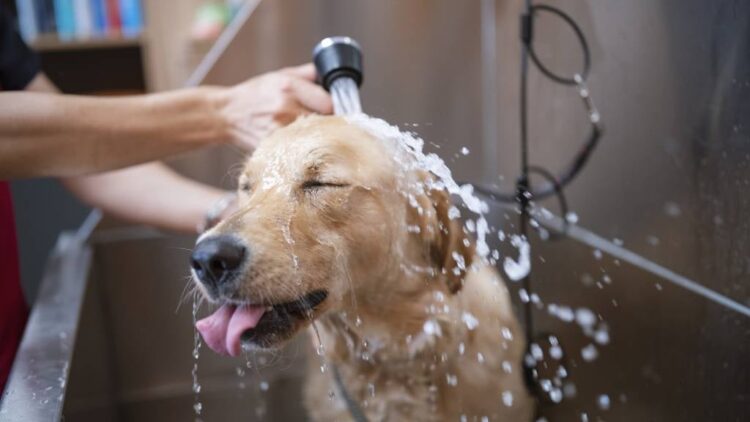
Bathing a dog that is distressed can be a difficult task. However, with the right technique and patience, it is possible to reduce their anxiety. Here are some tips to help the process go smoothly while calming your pet:
- Create a calming atmosphere before bathing your dog. Turn down the lights and play soft music, or provide treats and toys during the bath.
- Use warm water instead of hot water (the same temperature you would use if bathing a baby) in order to avoid burns or scalds.
- Avoid using strong shampoos or those containing harsh chemicals that could irritate their skin. A high quality organic shampoo is recommended for sensitive skinned breeds.
- Dry your pup thoroughly after bathing as this will help relax them and help prevent colds that can set in when wet fur isn’t addressed quickly enough.
- You may find that having someone else assist you during the bath can be helpful: one person can hold onto your pup while the other massages shampoo in or rinses them off with water from a cup or shower nozzle attached to the tap.
Tips for Keeping Dogs Calm During Washing
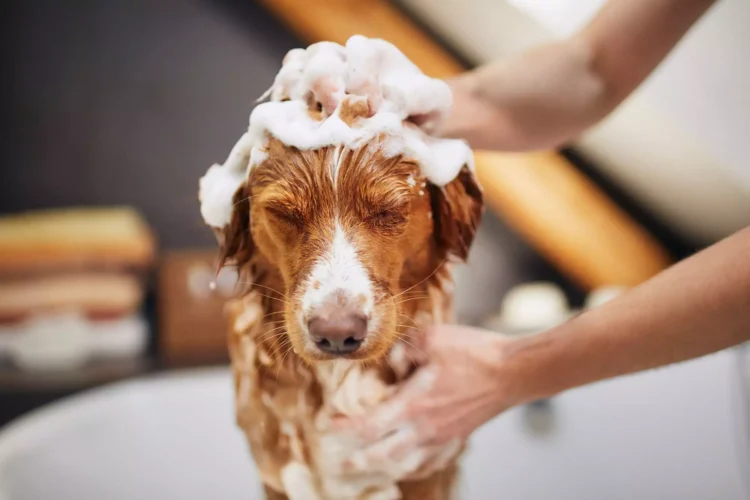
To make sure your pup remains calm during their wash, it is important to properly prepare them beforehand and employ a few tricks while they are in the bath.
Before Bathtime:
- Ensure that they have gone on an extended walk prior to their bath. This helps to tire them out before bathing so that they can relax in the water instead of feeling restless.
- Offer treats periodically throughout the grooming session–not just when stepping into the water–to help encourage positive reinforcement associated with baths.
- Set aside enough time for your pup’s bath – ideally 30 minutes from start to finish – so that neither of you feels rushed during the experience.
During Bathtime:
- Allow your pup access to a safe space where he/she can easily enter/exit without becoming overwhelmed.
- Maintain a calm and gentle demeanor throughout the process; try not to scold or rush your pup if they appear scared or restless as this could further escalate their anxiety levels.
- Keep distractions available; playing soft music or offering some toys can be helpful in soothing anxious pups who may need some extra attention while they take their bath.
After Bathtime:
- Reward good behavior with treats afterward and offer plenty of praise – this serves as reinforcement that will likely lead them to anticipate bath time rather than dreading it!
- Take time after their bath for post bath activities such as brushing, trimming nails and combing fur which are all important for keeping pups clean and groomed but also helps them associate bathing with something positive instead of negative experiences!
Conclusion
Go slowly and be patient. Make sure the water is at a comfortable temperature, use warm water to start and slowly work up the temperature if necessary. Be gentle with your touch and use calming words or soothing music. Allow them to familiarize themselves with each product before use; this will help reduce their stress surrounding getting wet.
Make sure you have plenty of towels ready to dry them off after the shampooing process. After they’re dried off, give plenty of treats or affection as positive reinforcement for good behavior – it will help keep your dog calm in future baths!

